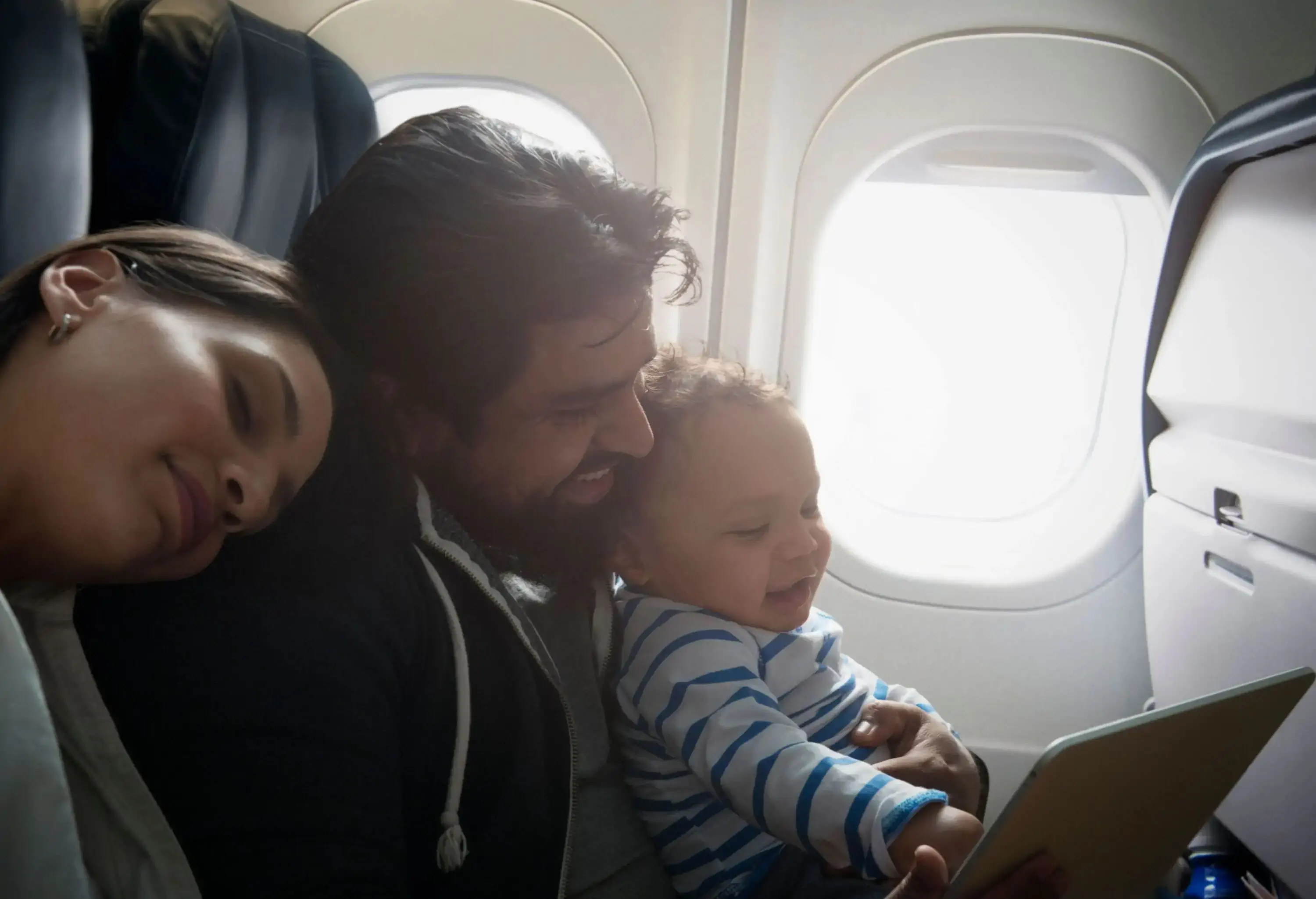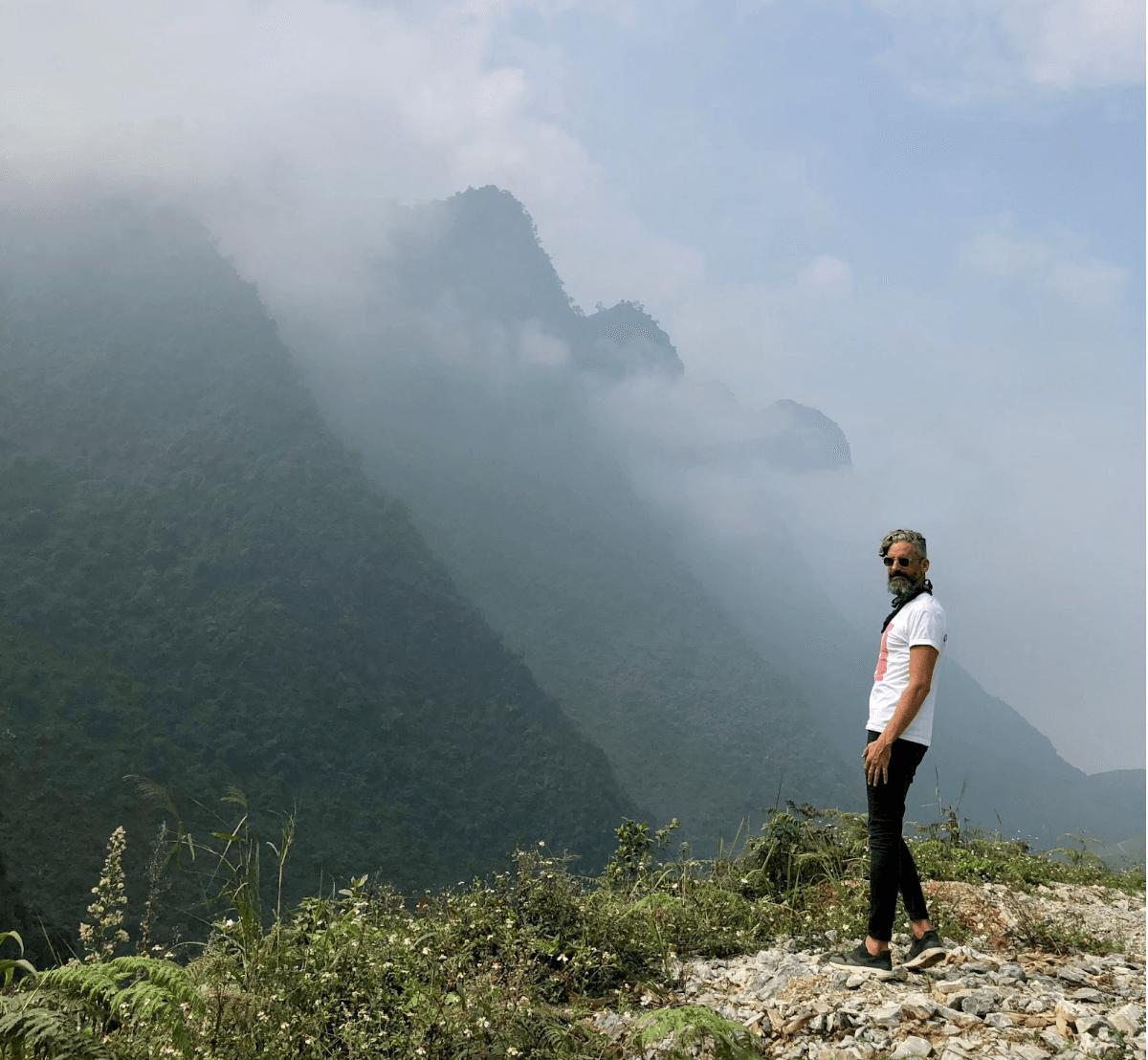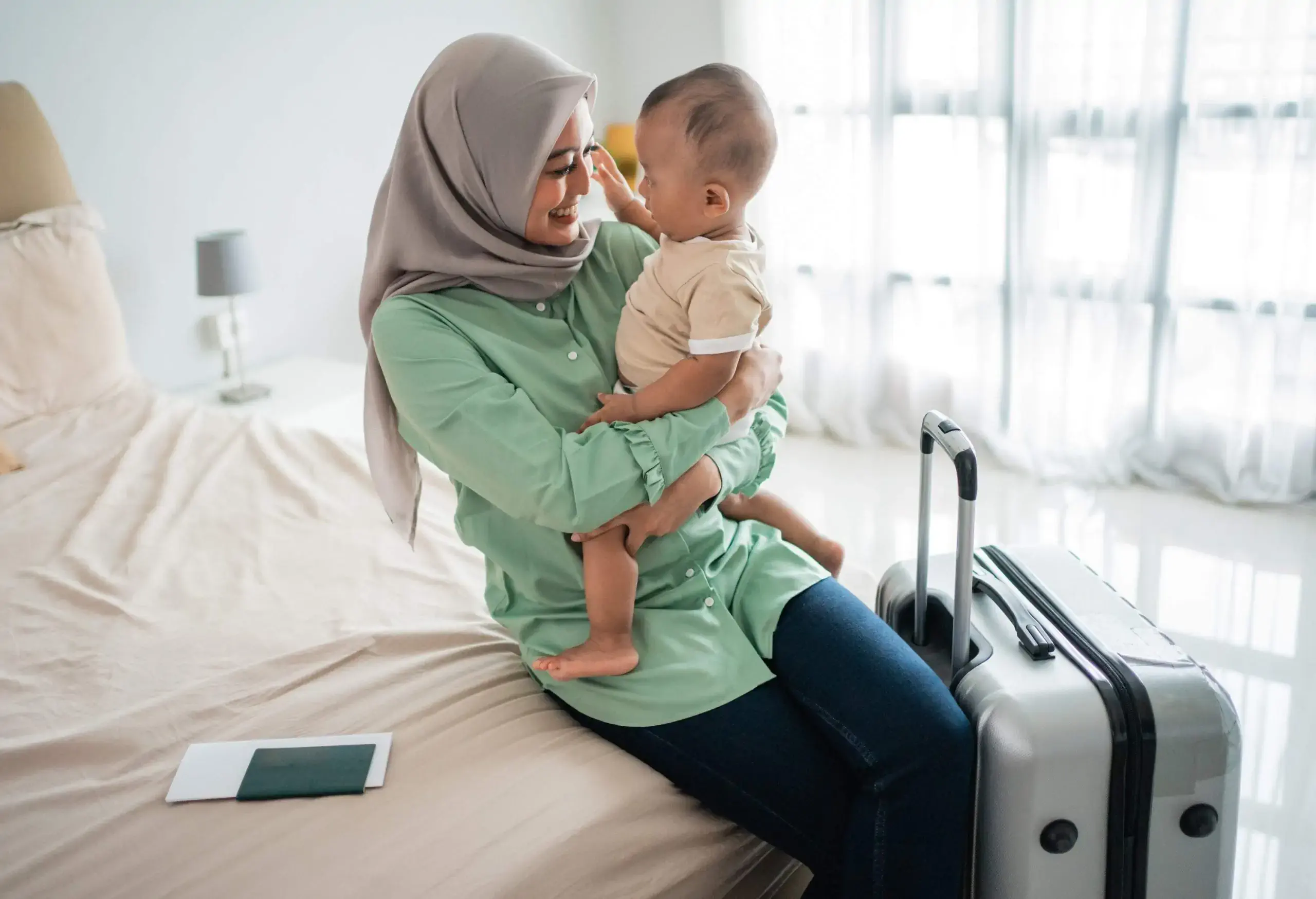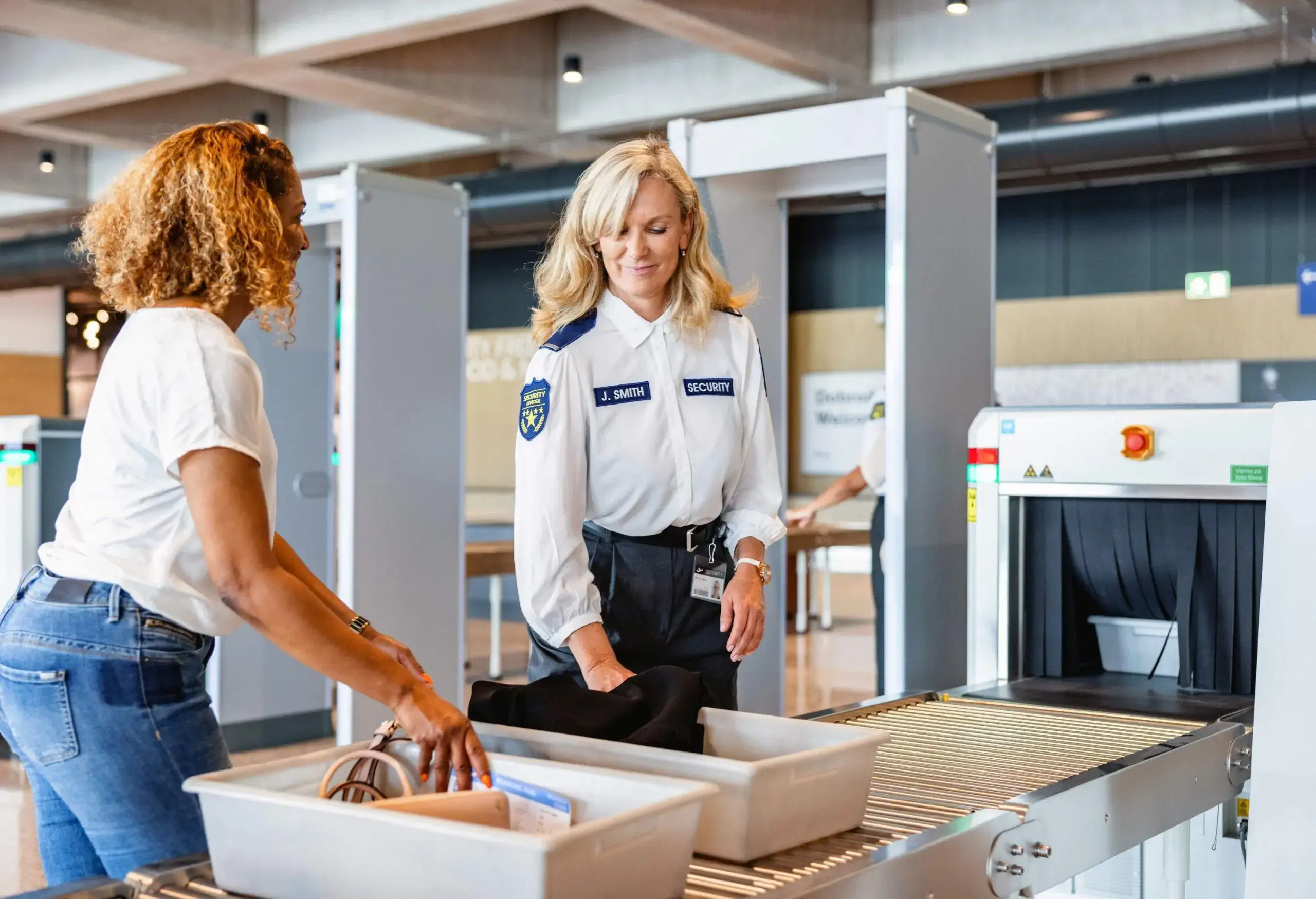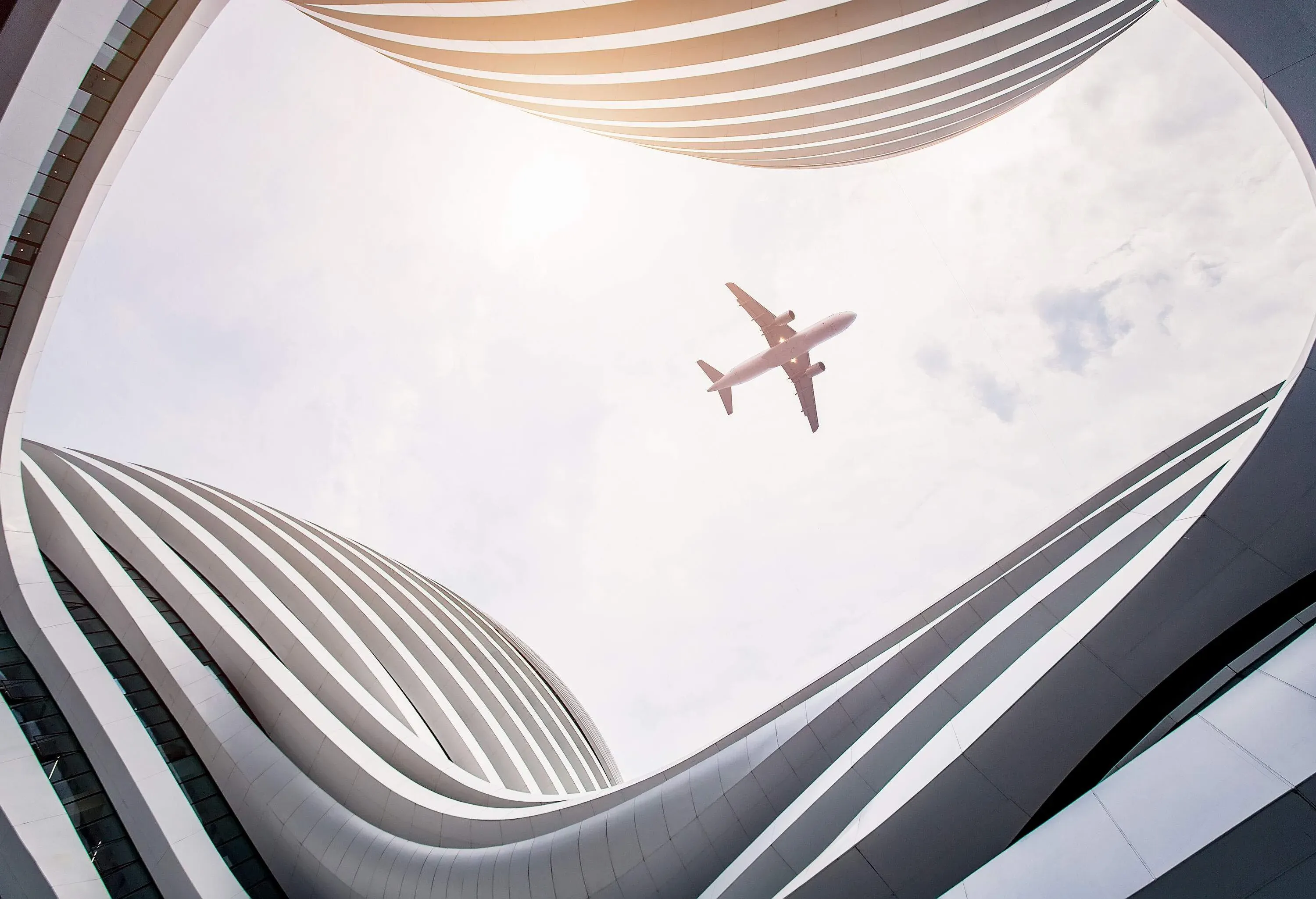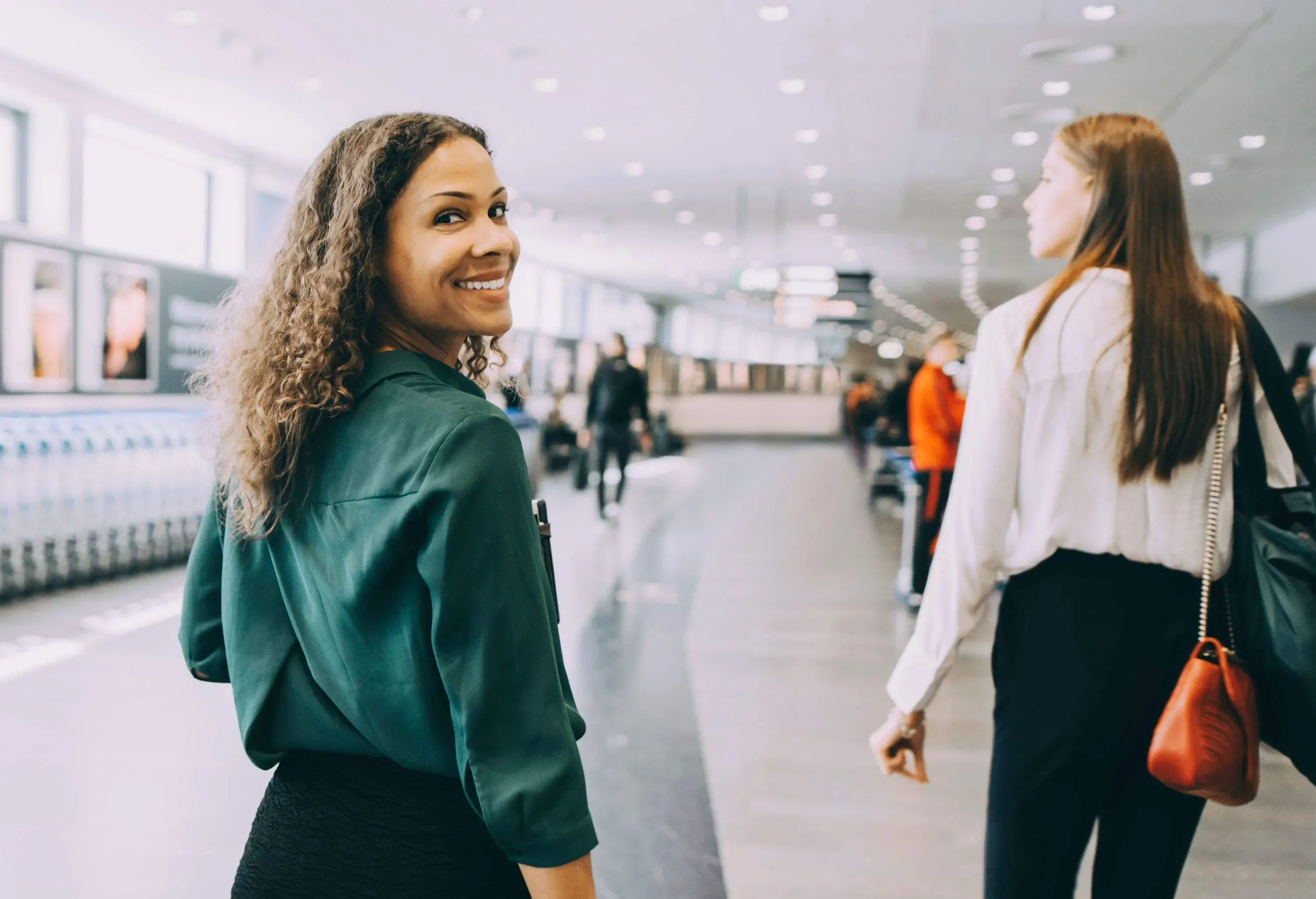Flying with a baby can be an intimidating experience. The unpredictable variables of air travel, a baby’s mood and the reactions of fellow passengers have the potential to make it a stressful flight. Proper preparation can make a big difference and mean it doesn’t have to be something to dread.
Getting prepared for flying with a baby
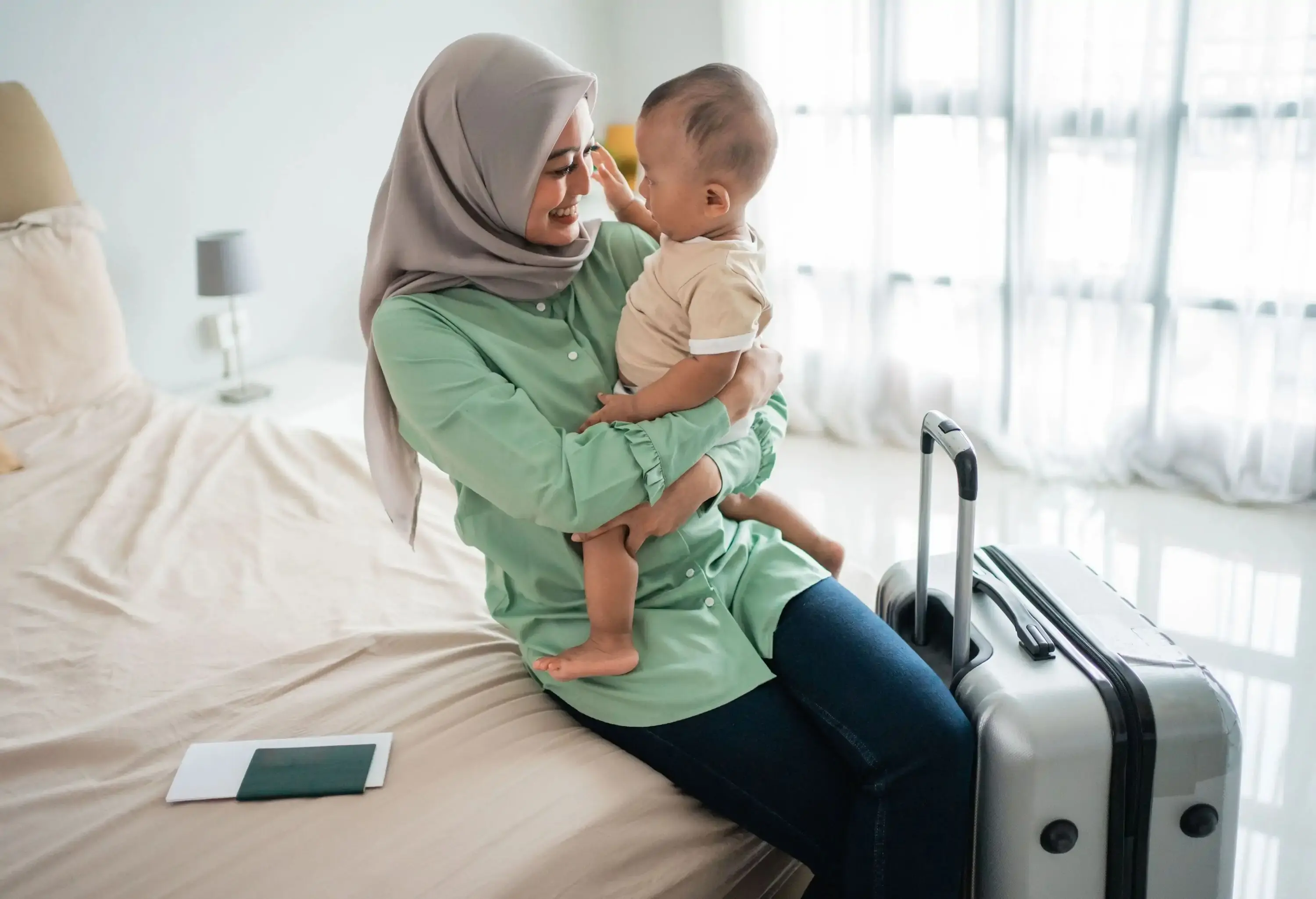
The major prep happens before you get anywhere near the plane. Knowing airline policies and understanding security procedures will make the whole experience much smoother – for you and your baby. Tick these boxes on your flying with a baby checklist and you’ll be halfway to your vacation before you know it.
When is a baby old enough to fly on an airplane?
There’s no minimum age that defines when babies are legally allowed to fly. Most airlines have their own policies and recommend babies are at least two weeks old, even if they can fly younger.
American Airlines, for example, allows babies that are just two days old but requires a fit-to-fly letter from a doctor if they’re under seven days. As policies vary by airline, it’s wise to check before you book.
In this article I’ve followed the common guideline that babies are from newborn to two years old. If your children are older, read my guide to flying with kids.
What documents do you need to fly with a baby?
Traveling internationally, babies need the same documents as adults – a passport and where applicable, a visa. This means you do not need to bring a birth certificate when flying overseas with a baby. Some countries, including the US, ask that parents flying solo bring a letter of consent from the absent parent.
If you’re flying domestically, it’s wise to bring their birth certificate as proof of age. Some airlines, like Southwest, will always ask for proof of age and don’t accept digital copies or photos.
How many babies can you fly with?
For safety reasons all airlines specify that each adult can fly with only one baby on their lap. If you want to bring another child, you’ll need to book them a dedicated seat if there isn’t another adult to carry them.
Typically, airlines allow only one baby under two per adult. If you’re traveling with a baby, you can also bring a child under five. If you have other requirements, speak to the airline directly as, of course, not all policies are the same.
Does a baby need to be vaccinated to fly?
There is no universal requirement for babies to be vaccinated to fly. Instead, you should consult your doctor and follow their guidance. The CDC recommends where possible to follow routine childhood immunizations on a normal schedule, but has advice on accelerated vaccine schedules based on the demands of travel.
How much does flying with a baby cost?
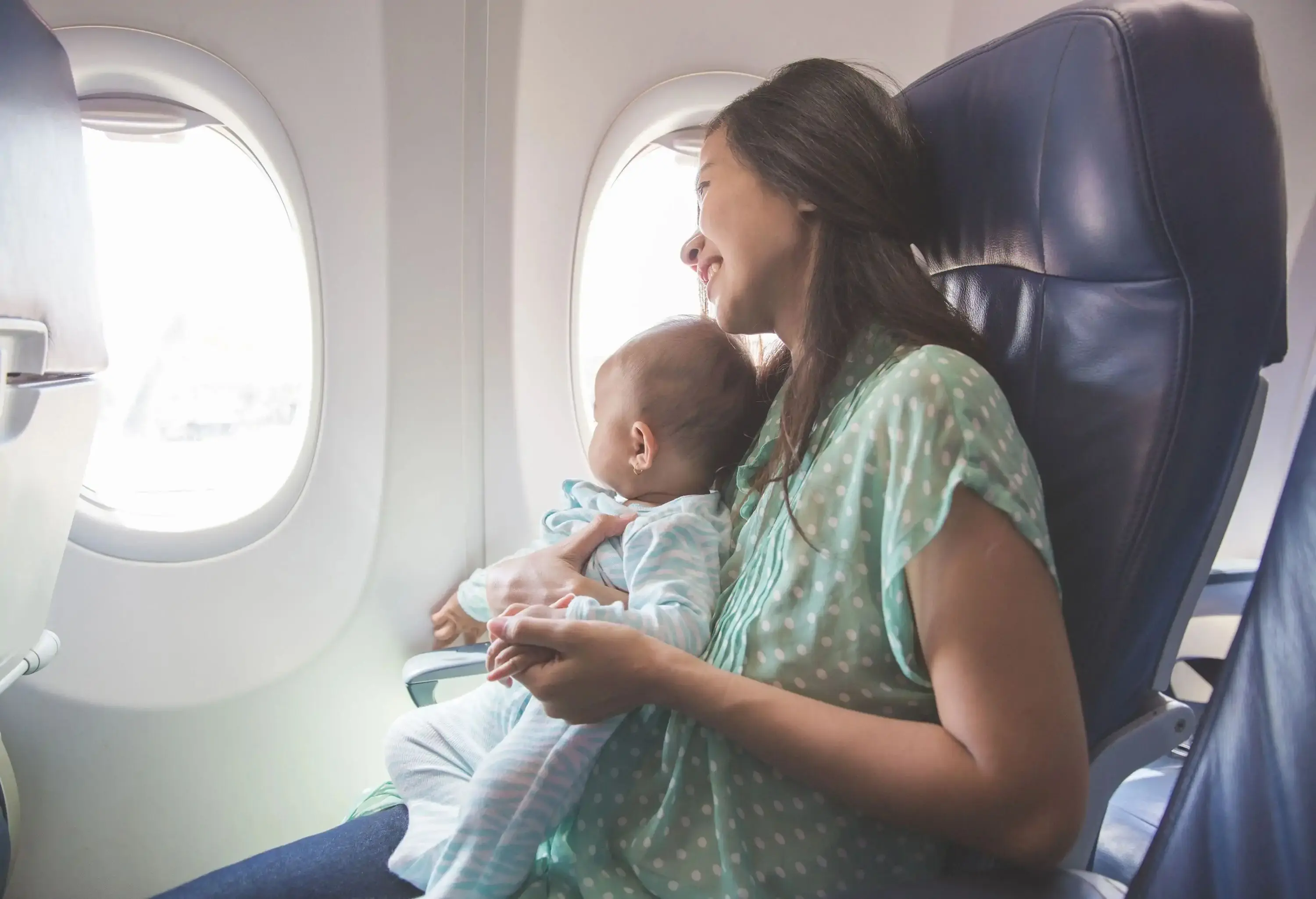
If you’re flying domestically within the US, most major airlines let a baby fly for free on the lap of an adult. If you’re flying internationally with a lap infant, expect to pay a reduced fee, typically around 10% of the adult fare.
The baby may not need a separate ticket, but will have to be added to the adult’s reservation. If you can’t find details during the online booking process, call the airline directly.
Lap infant or dedicated seat
Flying with your baby on your lap is the cheapest option and very common, especially on shorter flights. For long-haul flights, you can ask your airline for a bassinet or ‘sky cot’ to sleep in. Most bassinets require the baby to be under 6 months old and weigh 20 pounds or less. You’ll have to book a bulkhead seat, but get in early as they’re usually offered on a first come first served basis.
Alternatively, bring a car seat with an approved child restraint system for your baby to sleep in. The FAA states this is the safest option for flying with a baby, considering factors like turbulence, the most common cause of baby injuries in flight. Make sure it’s certified for use in planes – there should be a label on the seat stating as much.
As soon as your baby starts to get more active, a car seat is the safer and far more comfortable choice for your baby. It may cost more, but the added convenience is worth its weight in gold.
Duncan Madden, travel writer
Apart from the added safety, I found this was the best option as my son grew and became more restless and harder to handle. It does come at a cost as you’ll need to book a dedicated full-price seat but the convenience was worth it. Many airlines insist on a window seat so cabin crew don’t have to reach over them with hot food and drinks.
Baby baggage allowance
If you’ve booked a lap infant ticket, airlines typically allow you to bring a diaper bag, foldable stroller and car seat as carry-on luggage. Expect the stroller to be checked in free at the gate. Some airlines also offer a checked bag, although this may be with a reduced maximum weight.
If you’ve booked a dedicated seat for your baby, they receive the same baggage allowance as an adult ticket.
At the airport
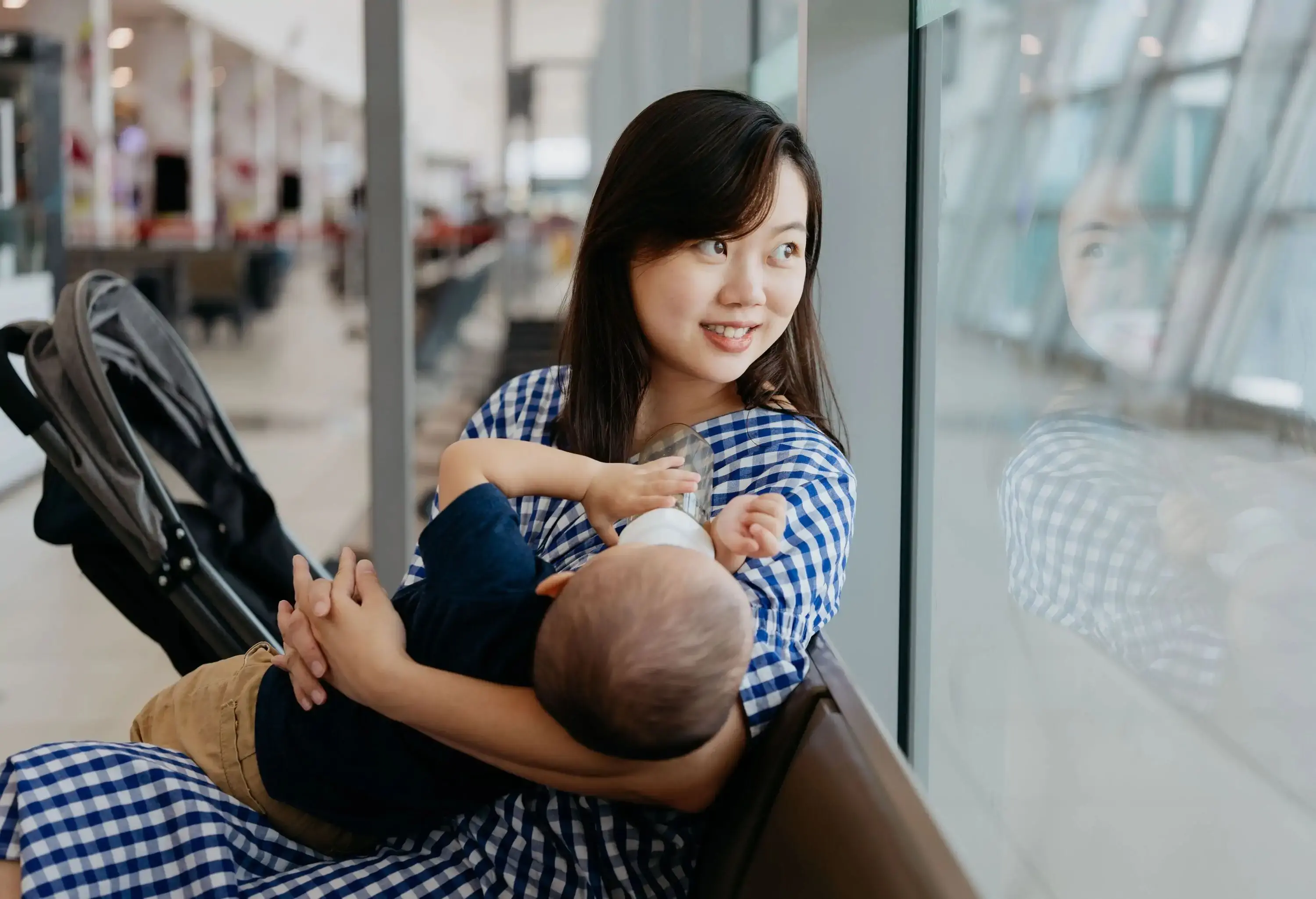
I’m a firm believer in a backpack when navigating the airport with a baby. Being hands free is incredibly helpful. It’s one of the only times when flying I consider checking my luggage in. Keep essentials like diapers, milk and food at the top for easy access.
How to prepare for TSA with a baby
All your carry-on luggage will need to go through the security scanner, including strollers and car seats. If you’re carrying liquids like formula, breast milk or baby food, let the TSA agents know. Pack them separately and you’ can follow the reasonable quantities rule and’ll be exempt from the 3-1-1 rule that limits liquid quantities to 3.4 ounces.
Any liquids over 3.4 ounces may be tested for chemicals or explosives. Don’t be afraid to ask the TSA agent to change their gloves before testing. Breast milk doesn’t need to be X-rayed or opened, so ask for it not to be if you prefer. Once all your luggage is on the belt, carry your baby through the scanner in your arms.
Can you use Global Entry and TSA PreCheck with a baby?
Children 12 and under can use the TSA PreCheck lane with a parent or guardian who’s enrolled in the TSA PreCheck program. Global Entry membership includes TSA PreCheck benefits, but babies will need their own membership to use the Global Entry lane. If the parent is a member, there’s no application fee for children under 18.
When is the best time to fly with a baby?
There is no hard and fast best time to fly with a baby. Factors like length of flight and whether you’re flying direct or making a connection can have a huge impact. Sleep patterns also vary, although some babies tend to sleep more reliably at night after a few weeks.
I found flying at night the best option for long haul, but that’s also because it gave me a chance to sleep when my son did. Bear in mind that if your baby does play up on a night flight, it may incur more ire from sleep-deprived fellow passengers than a day flight.
In the air
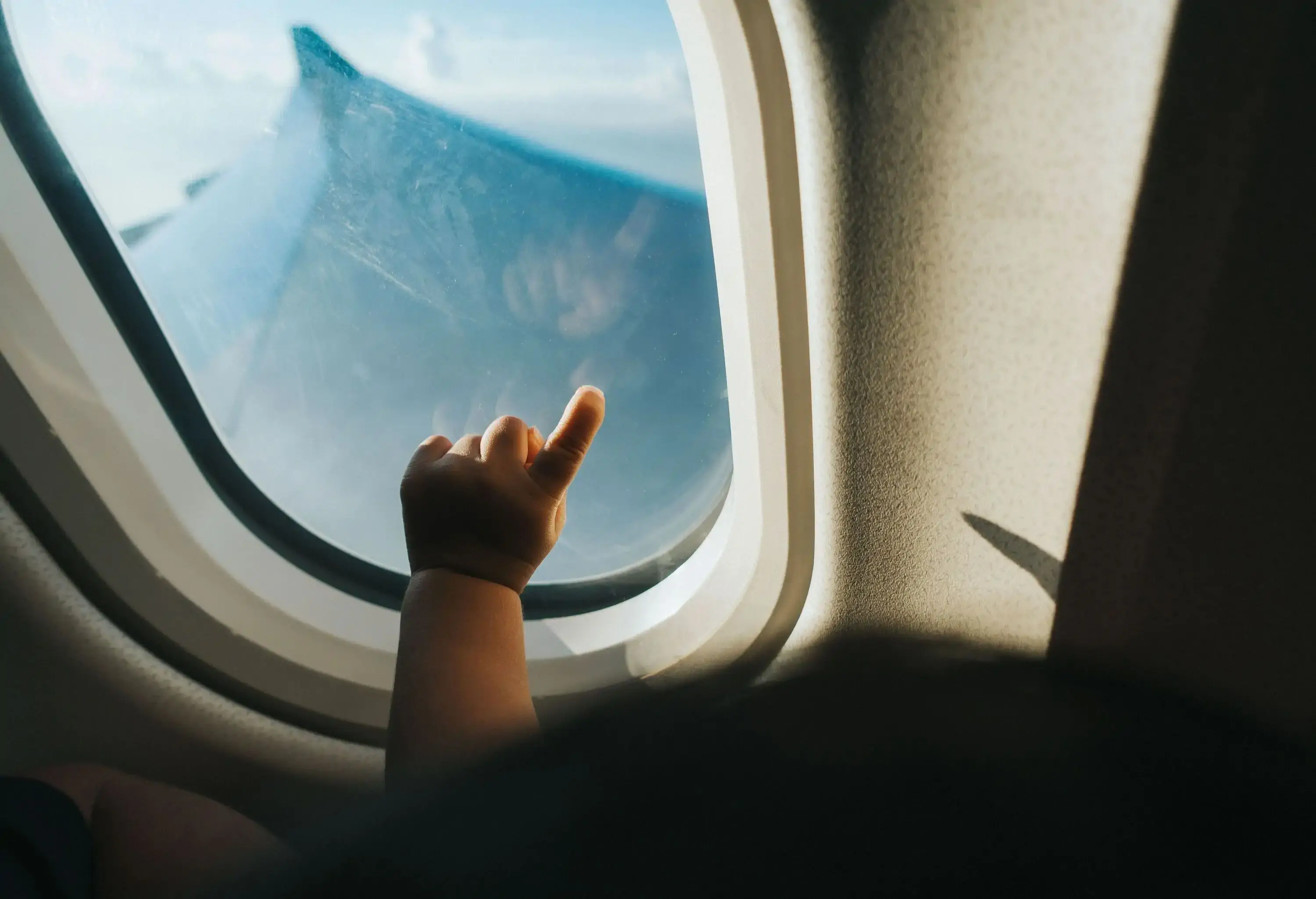
Now comes the hard part! If you’ve done your preparation, just relax and take things as they come. Remember to breathe deep and be patient – the more stressed you get, the more stressed your baby will become.
Ignore any sideways looks or snide remarks from other passengers. For every unhappy fellow flier, know that there are just as many who’ve been in your shoes and have only sympathy!
Duncan Madden, travel writer
What food and drink can you take on the plane?
You can take the food and drink your baby will need for the flight on board. Prepare for delays and bring more than you think you’ll need. This includes baby food, breast milk, formula and water for bottles. You can also ask cabin crew for boiling water to make up bottles on board, to save you having to carry it.
If your baby has started solids, bring meals and snacks from home so you don’t have to find them at the airport. And you can make sure they’re eating things they like. I remember spending endless hours feeding my son cheese puffs one at a time, which also helped to keep him quiet and happy!
Is breastfeeding allowed on a plane?
There are no restrictions regarding breastfeeding on a plane. All major airlines welcome breastfeeding mothers, with some happy to offer a more private space to feed should you want it. Indeed, bottle or breastfeeding during takeoff and landing is an essential, as it prevents pressure build up in the baby’s ears that can cause real pain and, inevitably, tears.
Where can you change a baby’s diaper on a plane?
My tip is to change your baby’s diaper at the last minute before the flight. Use overnight diapers so you only need to make a change should the worst happen.
If you’re flying long haul, restrooms will have baby changing platforms, although it’s usually very cramped. Smaller planes don’t always have this facility so if your baby suffers an unexpected poonami, ask cabin crew for help. They’ll find you room to lay out your changing pad, because you should never try and change a diaper at your seat.
Worst case scenario, you can use the closed toilet lid. While I don’t recommend it, sometimes needs must! Remember to not let go of your baby at any point as it’s not a stable platform and use a disposable changing pad.
How do you keep babies (and everyone else) happy on a flight?
The million dollar question! The simple truth is, you can’t. But there are steps you can take. Here are my tips for flying with a baby in as much peace as possible.
- Dress sensibly. Planes can waver between hot and cold, so dressing your baby in layers makes it easier to adapt. Pick outfits that offer easy access for diaper changing.
- Bring ear protectors. Planes are noisy and making things quieter can help keep your baby calm and, hopefully, asleep. Ears can also suffer with lift off and landing, so bring a pacifier or have a bottle ready, which helps even out ear pressure.
- Pack suitable toys. Soft toys for sleeping with, toys that don’t make a noise and that aren’t easy to lose are perfect. Pack them in small separate bags so they’re easy to access and transport if they get dirty.
- Bring a digital backup. If all else fails, a bit of screen time could make all the difference. Remember to download content in advance.
- Create a cozy, homelike environment. Familiar blankets, a favorite toy and following normal routines as much as is possible really helps encourage sleep.
- Be friendly. Say hello to the passengers around you, and introduce your baby to them. I found this was a great way to soften attitudes and tempers.
- Ask for help. If you need a bit of relief, ask cabin crew. I can’t count the number of times a British Airways flight attendant has held my son or taken him off to explore the plane while I’ve gone to the restroom or eaten a meal.

